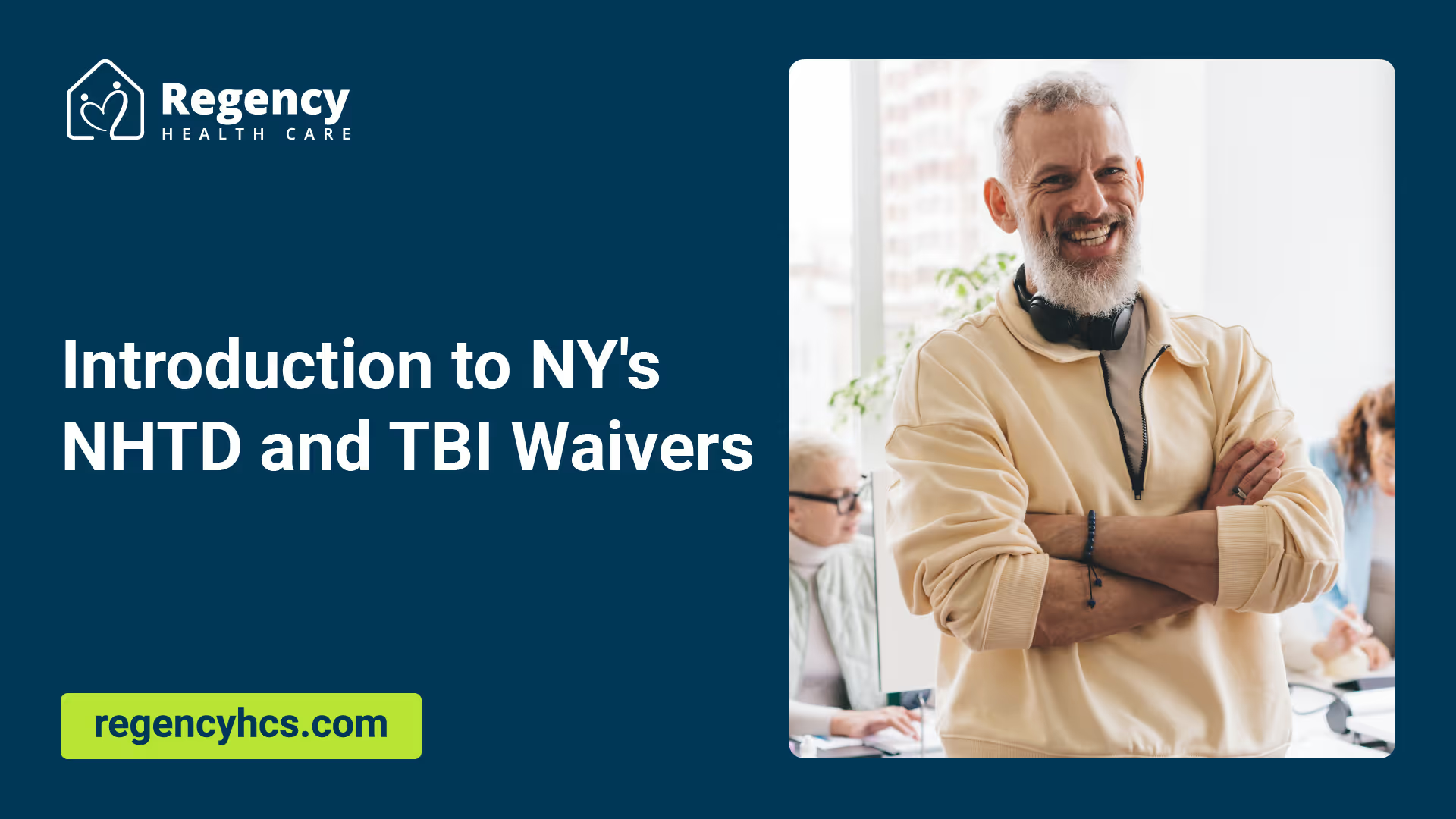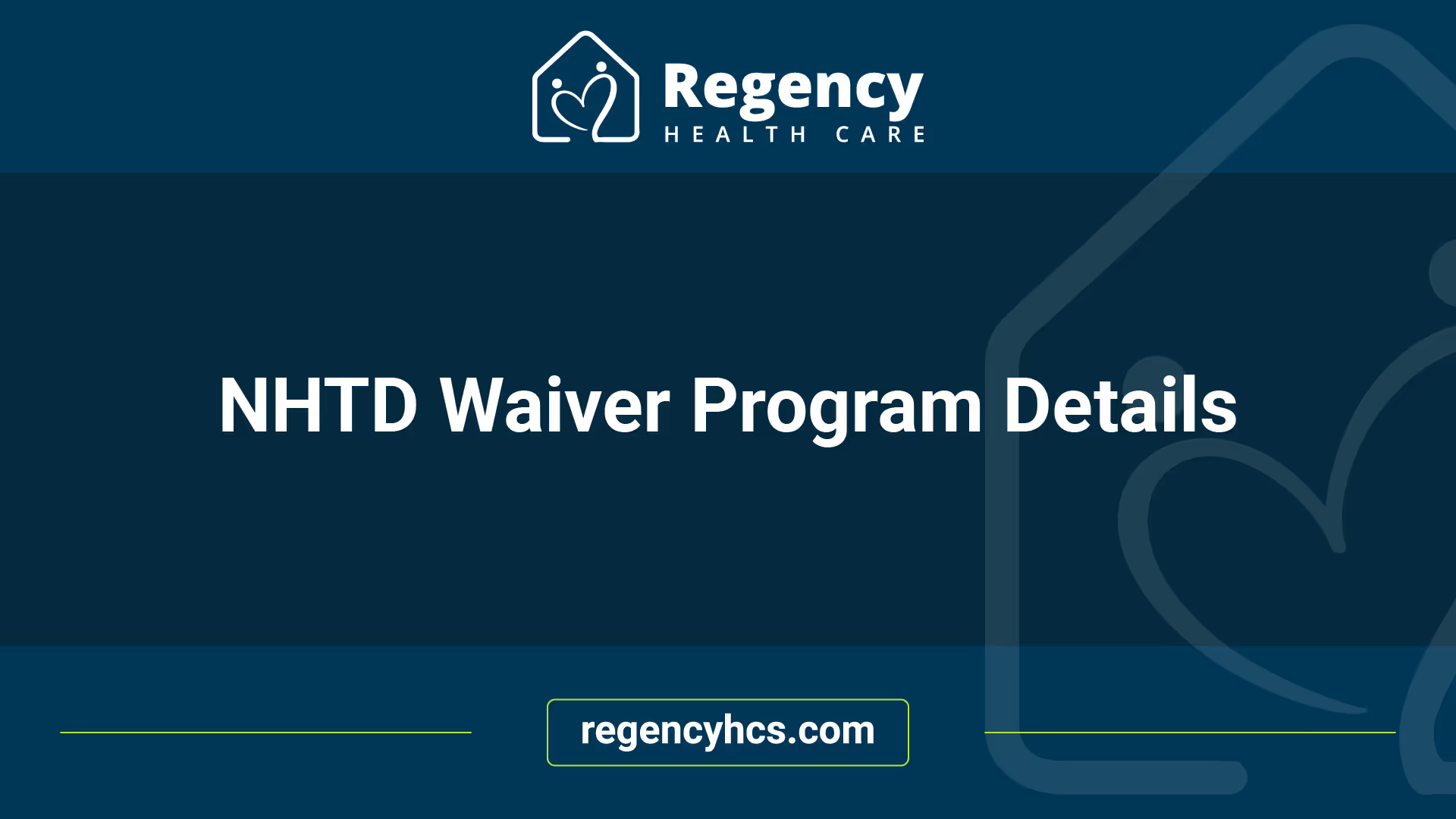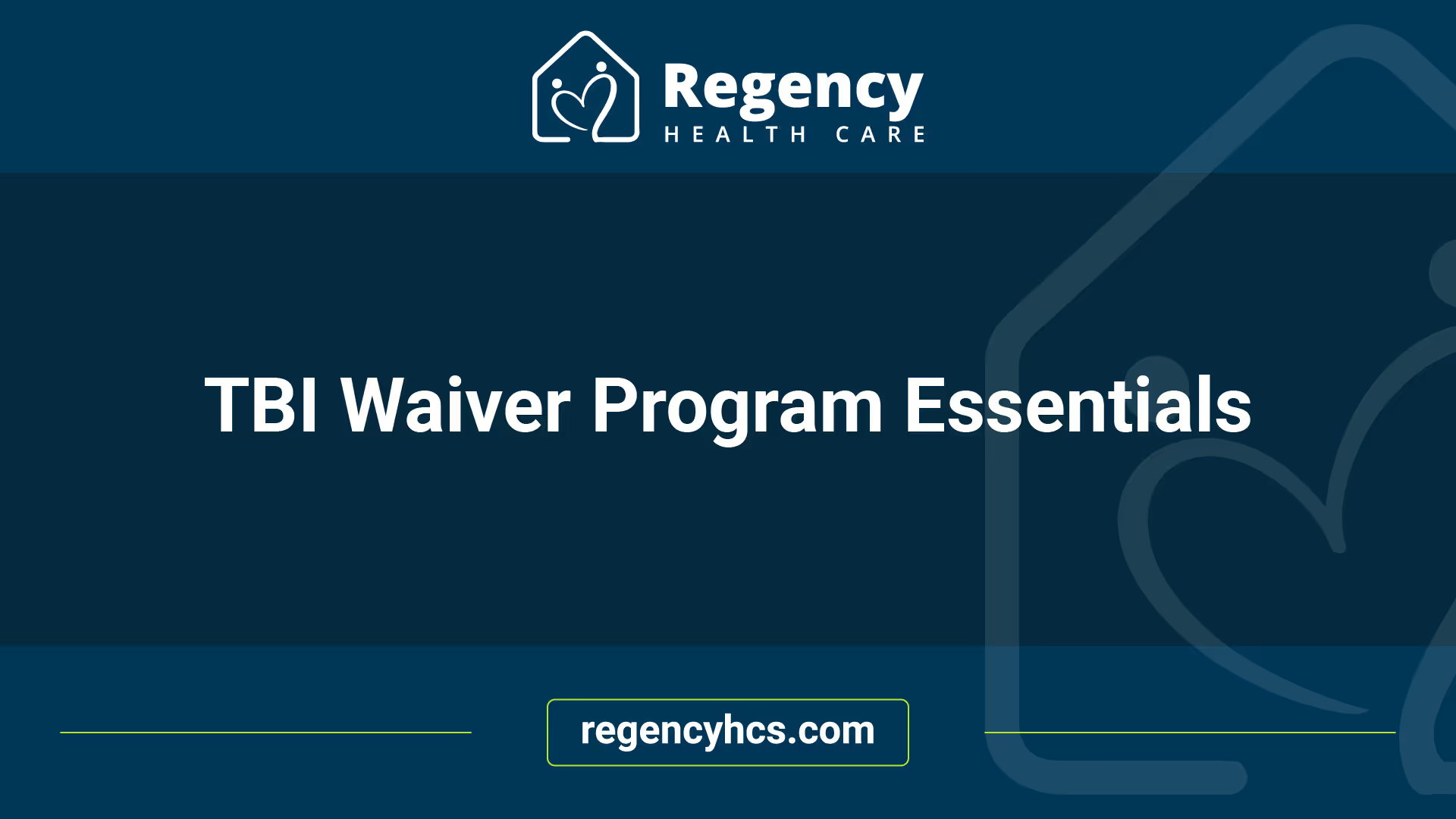Understanding NHTD and TBI Waivers
To better understand the NHTD (Nursing Home Transition and Diversion) and TBI (Traumatic Brain Injury) waiver programs in New York, it is important to grasp the overall picture of these programs and the eligibility criteria involved.

Overview of NHTD and TBI Programs
The NHTD waiver program, as outlined by the New York State Department of Health, is designed for individuals with disabilities and seniors who wish to transition from nursing homes to community-based living arrangements. The program operates based on the philosophy that individuals with disabilities and seniors have the same rights as others, including the right to be in control of their lives, encounter and manage risks, and learn from their experiences. The primary objectives of the NHTD waiver program are to empower individuals, increase independence, promote community inclusion, self-reliance, and meaningful productive activities.
On the other hand, the TBI waiver program, as stated by the New York State Department of Health, is specifically designed for individuals diagnosed with a traumatic brain injury. This program aims to provide services and supports to individuals who require the level of care provided in a nursing facility but prefer to receive services in a community-based setting.
Eligibility Criteria for Waiver Programs
Eligibility for the NHTD waiver program, according to the New York State Department of Health, includes meeting specific criteria. Individuals must not be in an Assisted Living Program (ALP) or other congregate care settings, and they must not be enrolled in certain managed care programs unless they are disenrolled. Additionally, individuals who would receive services in an Institution for Mental Disease (IMD) are not eligible for the NHTD waiver.
For the TBI waiver program, eligibility requires a diagnosis of traumatic brain injury, Medicaid eligibility, and a need for the level of care provided in a nursing facility, as specified by the New York State Department of Health.
Understanding the basics of NHTD and TBI waiver programs and their eligibility criteria is essential for individuals seeking to access these services. By meeting the eligibility criteria, individuals can benefit from the services and supports provided through these programs, enhancing their quality of life and promoting community integration. To learn more about the benefits of NHTD and TBI waivers, the application process, success stories, or a comparison between these programs, refer to our related articles on benefits of NYS NHTD and TBI waivers, how to apply for NYS NHTD and TBI waivers, success stories: NHTD and TBI waivers in New York, and comparing NYS NHTD and TBI waivers.

NHTD Waiver Program Details
When exploring the NHTD (Nursing Home Transition and Diversion) waiver program, it's important to understand its philosophy and objectives, as well as the emphasis it places on participant autonomy and choice.
Philosophy and Objectives
The NHTD Medicaid waiver program, established in New York, is grounded in the belief that individuals with physical disabilities and seniors have the same rights as others. It emphasizes their right to be in control of their own lives, manage risks, and learn from experiences while ensuring their health and welfare in the community.
The program aims to empower participants, increase their independence, promote community inclusion, self-reliance, and meaningful productive activities. It recognizes that individuals with disabilities and seniors have unique strengths, needs, choices, and goals, and seeks to support them in achieving their desired outcomes.
Autonomy and Participant Choice
A key aspect of the NHTD waiver program is the emphasis on participant autonomy and choice. Participants have the freedom to choose the specific services they wish to receive, the service providers they want to work with, and the outcomes they aim to achieve. This level of autonomy allows individuals to tailor their care and support to their unique needs and preferences.
By being the primary decision-makers in their care, participants collaborate with service providers to develop a personalized service plan. This collaborative approach ensures that the services provided align with their unique strengths, needs, choices, and goals. The ultimate goal is to empower individuals, increase their independence, and promote community inclusion and self-reliance [2].
The NHTD waiver program recognizes that participants are experts in their own lives and encourages them to actively participate in decision-making. This person-centered approach fosters a sense of ownership and control over their care and support, leading to greater satisfaction and overall well-being.
For those interested in learning more about the benefits of the NHTD and TBI (Traumatic Brain Injury) waivers, you can read our article on benefits of NYS NHTD and TBI waivers. If you're considering applying for these waivers, we have a comprehensive guide on how to apply for NYS NHTD and TBI waivers. Additionally, you may find inspiration from success stories of NHTD and TBI waivers in New York and a comparison of the NHTD and TBI waivers in New York in our article on comparing NYS NHTD and TBI waivers.
NHTD Services and Benefits
Within the NHTD (Nursing Home Transition and Diversion) waiver program, participants have the opportunity to access a range of services and benefits tailored to their unique needs and goals. This section will cover two key aspects of the program: service customization and community inclusion and independence.
Service Customization
The NHTD program places a strong emphasis on participant autonomy and choice. Individuals enrolled in the program have the freedom to select the services they receive, the service providers they work with, and the outcomes they aim to achieve. This level of customization allows participants to shape their own care plans based on their strengths, needs, choices, and goals. By actively involving participants in the decision-making process, the program promotes personal empowerment, increased independence, and a greater sense of control over one's own life.
The service customization aspect of the NHTD program recognizes that each individual's journey is unique. By collaborating with service providers, participants can develop a service plan that aligns with their specific requirements and aspirations. This personalized approach helps to ensure that participants receive the support and assistance that best suits their circumstances, ultimately leading to greater satisfaction and success within the program [2].
Community Inclusion and Independence
Another important focus of the NHTD program is to promote community inclusion and independence among participants. The program recognizes the rights of individuals with physical disabilities and seniors to be in control of their own lives, manage risks, and learn from their experiences while ensuring their health and welfare in the community. By encouraging personal empowerment and self-reliance, the program aims to enhance participants' quality of life and overall well-being.
Community inclusion involves fostering meaningful connections and engagement with the wider community. Through participation in social activities, employment opportunities, and other community-based programs, NHTD participants can develop a sense of belonging and actively contribute to society. This aspect of the program plays a crucial role in combating isolation and promoting a fulfilling and independent lifestyle.
The NHTD waiver program acknowledges that participants' satisfaction is a vital measure of program success. By providing services that are tailored to individual strengths, needs, choices, and goals, the program strives to support participants in achieving their desired level of independence, community involvement, and overall satisfaction with their lives.
In summary, the NHTD waiver program offers participants the opportunity to customize their services to align with their unique needs and goals. It emphasizes participant autonomy, choice, and control over their own lives. Through service customization and an emphasis on community inclusion and independence, the program aims to empower individuals, enhance their quality of life, and foster personal growth and satisfaction. To learn more about the benefits of NHTD and TBI waivers, refer to our article on benefits of NYS NHTD and TBI waivers.

TBI Waiver Program Essentials
The Traumatic Brain Injury (TBI) Waiver program plays a vital role in assisting individuals with traumatic brain injuries in New York. Let's explore the essentials of this program, including the HCBS/TBI program overview and the application process and requirements.
HCBS/TBI Program Overview
The Home and Community-Based Services Medicaid Waiver for Individuals with Traumatic Brain Injury (HCBS/TBI) is a crucial component of the comprehensive strategy developed by the New York State Department of Health to ensure that individuals with traumatic brain injuries can receive services within New York in the least restrictive setting. The HCBS/TBI program provides support and services to individuals with traumatic brain injuries, enabling them to live in their communities and maintain their independence.
The HCBS/TBI waiver program focuses on person-centered care, tailoring services to meet the unique needs of each participant. Through this program, individuals with traumatic brain injuries can access a wide range of services, including but not limited to:
- Care coordination
- Home modifications
- Personal care services
- Respite care
- Transportation assistance
To learn more about the benefits of the NYS NHTD and TBI waivers, refer to our article on benefits of NYS NHTD and TBI waivers.
Application Process and Requirements
To apply for the TBI waiver program, individuals need to go through the application process, which begins with the TBI Referral Form. This form can be submitted by the person seeking to participate in the program or by someone else on their behalf. The referral form requires detailed information about the brain injury, including current information and the names and phone numbers of individuals who support the referral [3].
Once the referral form is submitted, it undergoes a review process by Headway, which includes verifying the active Medicaid status of the referred individual. Basic eligibility criteria, such as age, diagnosis, and Medicaid, are assessed. If the individual wishes to proceed with the process, they will be contacted within ten business days to schedule an interview with a Headway Nurse Evaluator or RRDS (Regional Resource Development Specialist).
Upon approval of the service plan by Headway, the applicant becomes a participant in the TBI waiver program. A notice is then sent to the county, indicating the start date of services for the participant.
If you are interested in learning more about how to apply for NYS NHTD and TBI waivers, please refer to our article on how to apply for NYS NHTD and TBI waivers.
Understanding the essentials of the TBI waiver program is crucial for individuals with traumatic brain injuries in New York. By familiarizing themselves with the HCBS/TBI program overview and the application process and requirements, individuals can make informed decisions and access the necessary support and services for their unique needs.
Transition to Managed Care
As part of the Medicaid Redesign Team (MRT) initiatives implemented by Governor Andrew Cuomo in 2011, New York State has undergone a transition from the 1915c Home and Community Based Services (HCBS) Waiver for the Nursing Home Transition and Diversion (NHTD) and Traumatic Brain Injury (TBI) Programs to a managed care system. The aim of this transition is to improve the quality of care, enhance health outcomes, and reduce per capita costs.
Medicaid Redesign Team Initiatives
The Medicaid Redesign Team (MRT) was created to bring about significant reforms in New York's Medicaid program. These reforms focus on improving the quality of care, enhancing health outcomes, and reducing per capita costs. The transition from the NHTD and TBI Waiver Programs to managed care is one of the key initiatives undertaken by the MRT [4].
Managed Long Term Care (MLTC) System
The managed care system utilized in New York for long-term care services is known as Managed Long Term Care (MLTC). It streamlines the delivery of long-term care services to chronically ill or disabled individuals who wish to reside safely in their homes and communities. Enrollment in MLTC may be mandatory or voluntary, depending on individual circumstances. The MLTC system aims to provide comprehensive and coordinated care to eligible individuals, ensuring that their long-term care needs are met effectively.
Under the transition plan, Medicaid recipients in New York, including those in the NHTD and TBI Waiver Programs, are required to enroll in Medicaid Managed Care (MMC) plans. These plans provide Medicaid State plan benefits through Managed Care Organizations (MCOs). However, certain exemptions and exclusions may apply.
During the transition to managed care, the New York State Department of Health (NYSDOH) has implemented measures to ensure continuity of care for participants and service providers. Current waiver service providers will be contracted for a minimum of two years, with rate protection through April 1, 2020.
Understanding the transition to managed care and the introduction of the MLTC system is crucial for individuals participating in the NHTD and TBI Waiver Programs. By familiarizing themselves with these changes, participants can navigate the evolving healthcare landscape and access the necessary services for their specific needs. For more information on the benefits of NYS NHTD and TBI waivers, how to apply, and success stories, please explore our related articles.
Navigating the Application Process
When it comes to accessing the NYS NHTD and TBI waivers, understanding the application process is essential. This section will guide you through the steps involved in the application process, including referral and intake procedures, as well as service plan development and approval.
Referral and Intake Procedures
The first step in applying for the NYS NHTD and TBI waivers is the referral process. This can be initiated by the individual seeking the waiver or by someone on their behalf. The referral is typically made to the Regional Resource Development Center (RRDC), which serves as the central point of contact for waiver services.
Once the referral has been made, an intake meeting is scheduled between the applicant and the RRDC. During this meeting, detailed information about the individual's condition, age, diagnosis, and current services will be gathered. The RRDC will review basic eligibility criteria, such as age, diagnosis, and Medicaid status, to determine if the individual meets the requirements.
Following the intake meeting, a comprehensive assessment will be conducted to evaluate the individual's strengths, limitations, and goals. This assessment helps in determining the appropriate services and supports needed to meet the individual's needs.
Service Plan Development and Approval
Once the assessment is complete, a service plan will be developed based on the individual's goals and identified needs. The service plan outlines the specific services and supports that will be provided through the NHTD or TBI waiver program.
The service plan is reviewed by the RRDC to ensure that it aligns with the individual's needs and goals. If any modifications or adjustments are required, they will be discussed and incorporated into the plan. Once the service plan is finalized, it is submitted for approval.
Upon approval of the service plan, the individual becomes a participant in the NHTD or TBI waiver program. A notice is sent to the county with a designated start date for the services. Throughout the process, a Service Coordinator will guide the participant and provide assistance. If any concerns arise regarding the Service Coordinator's work, the participant can contact the RRDS Office for support [6].
Navigating the application process for the NYS NHTD and TBI waivers requires attention to detail and collaboration with the RRDC and other relevant parties. By following the referral and intake procedures, participating in the assessment process, and actively engaging in the development of the service plan, individuals can access the necessary supports and services to enhance their quality of life.
For more information on the benefits and eligibility criteria of the NHTD and TBI waivers, you can refer to our article on benefits of NYS NHTD and TBI waivers. If you're ready to take the next step and apply, check out our article on how to apply for NYS NHTD and TBI waivers.
References

How Family Caregivers Can Support a Loved One with TBI
April 10, 2025
Empowering Caregivers: Navigating the Journey of Supporting TBI Recovery

How Home Health Aides Support Individuals with TBI in Daily Living
April 10, 2025
Unveiling the Vital Role of Home Health Aides in TBI Care

How CDPAP Supports Individuals with Learning Disabilities
April 10, 2025
Empowering Choice and Independence: The Impact of CDPAP on Learning Disabilities

The Role of NHTD in Facilitating Independent Living
April 9, 2025
Empowering Independence: A Deep Dive into the NHTD Program

How CDPAP and NHTD Services Work Together for Comprehensive Care
April 9, 2025
Exploring the Synergy Between CDPAP and NHTD Services for Improved Home Care

The Benefits of Home-Based Palliative Care for Individuals with Chronic Illnesses
April 9, 2025
Enhancing Quality of Life with Home-Based Palliative Care



